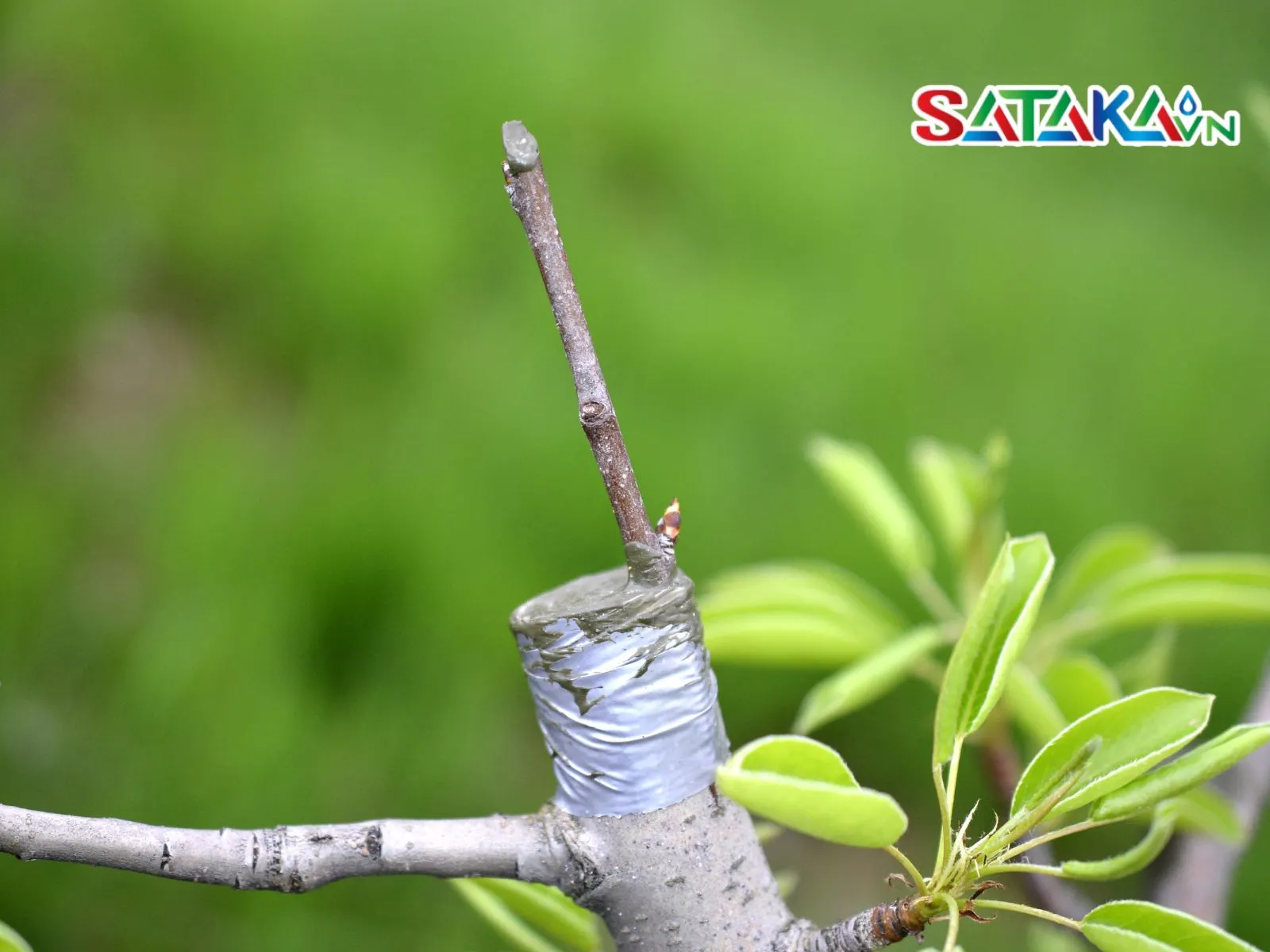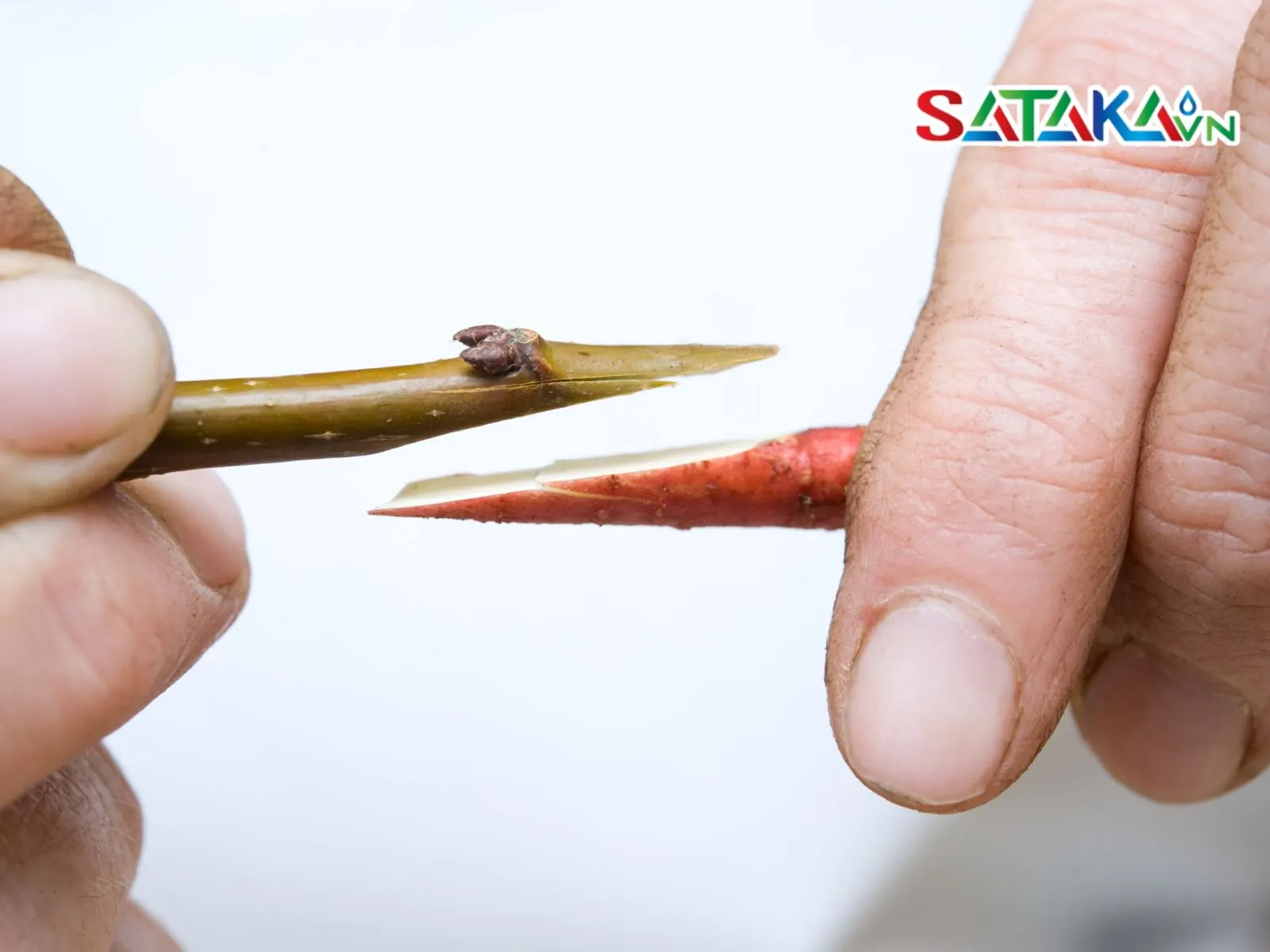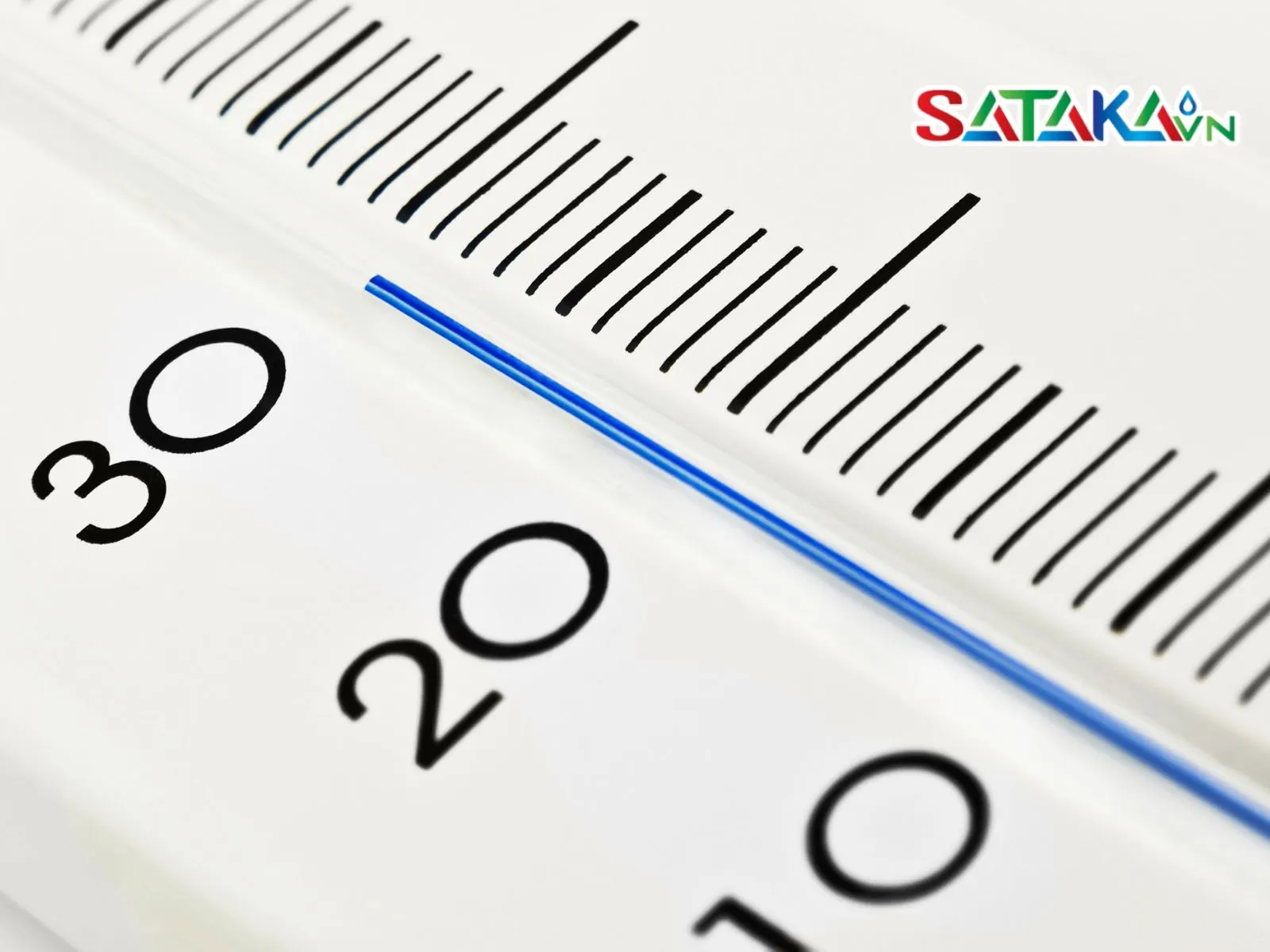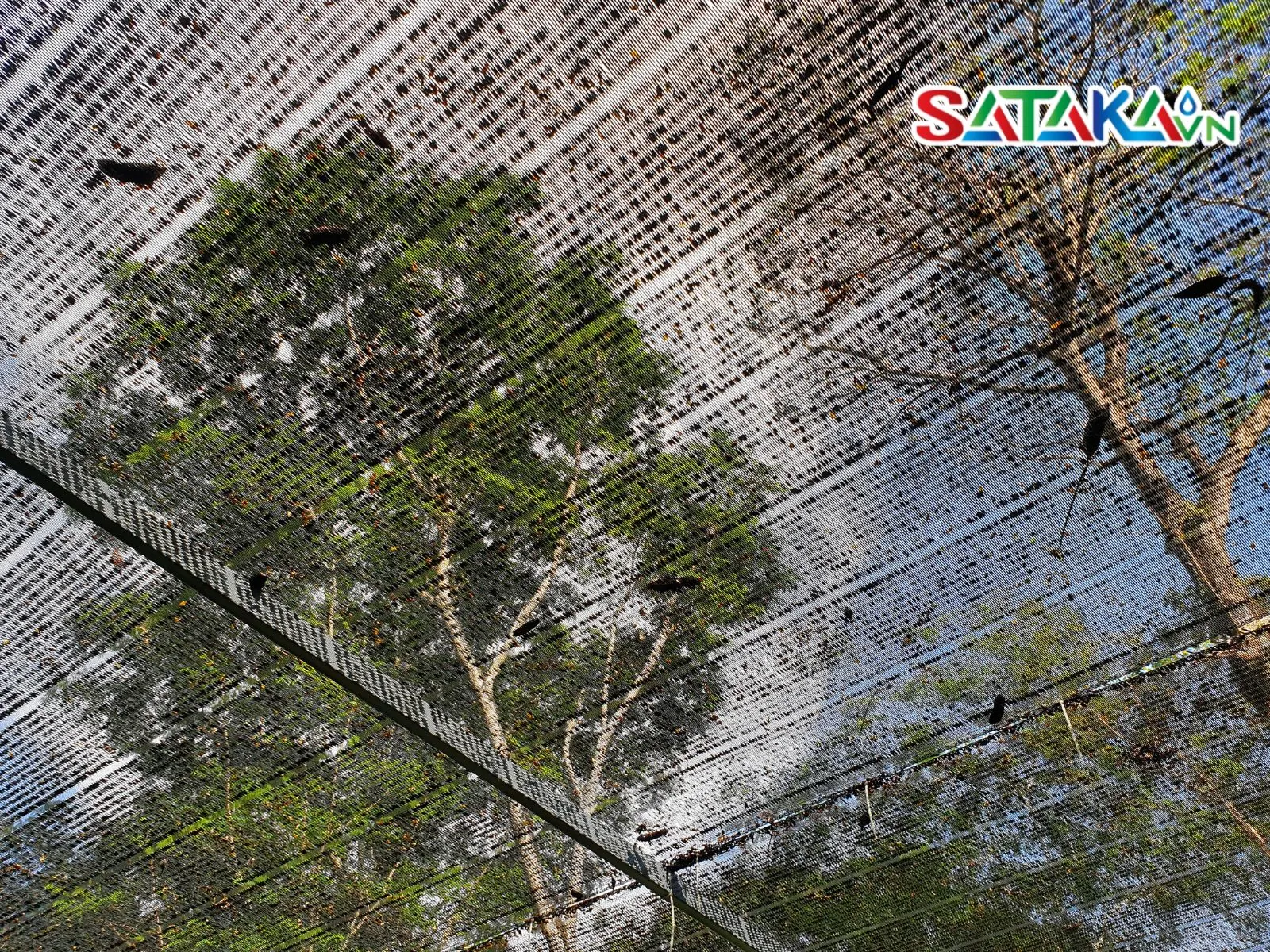Ways to graft coffee trees help the tree grow better, improve productivity and resistance to pests. This is an effective solution for farmers who want to improve the quality and productivity of coffee gardens.
Grafting coffee trees is an effective method for enhancing crop yield and quality. By combining the best characteristics of different coffee varieties, farmers can create robust trees that are more resistant to pests and diseases while producing higher yields. Sataka’s article will guide you through effective grafting techniques and post-grafting care to achieve the best results.
Grafting coffee trees is not just a farming technique; it’s also an art. This method involves combining the rootstock (base plant) and the scion (grafted branch) to create a stronger, more productive coffee tree.

Grafting coffee trees
There are three main grafting methods commonly used in coffee farming:
This method involves cutting a bud (a small piece of bark with a node) from the scion and attaching it to the rootstock. First, the rootstock is cut into a "V" shape, and the bud is inserted and then wrapped with grafting tape. Bud grafting allows the tree to grow leaves and develop quickly. However, it requires high technical skill and can fail if not performed correctly.
Similar to bud grafting, but in this method, a longer branch is used and grafted onto the rootstock. The scion is cut diagonally to ensure good contact with the rootstock. This method typically has a higher survival rate and results in more uniform tree development, but it requires well-prepared scions.

How to graft branches
This method is often used for mature trees. The top of the existing tree is cut off, and the scion is grafted onto the cut surface. Top grafting allows for quick variety improvement but requires careful matching of the rootstock and scion.
The best time to graft coffee trees is during the rainy season when there is sufficient moisture for growth. A temperature range of 25–30°C provides optimal conditions for grafting. Additionally, the soil should be well-prepared, well-drained, and nutrient-rich to support rapid development.

The temperature is about 25 to 30 degrees
To successfully graft coffee trees, prepare the following tools and materials:
Careful preparation minimizes risks and increases the success rate of grafting.

Grafting tools
After grafting, proper tree care is crucial. Follow these steps to ensure success:

Avoid direct sunlight
Experiment with and apply the grafting techniques and tips Sataka has suggested to your coffee plantation to see a noticeable improvement. With careful execution and proper post-grafting care, grafting coffee trees can transform the health, resistance, and productivity of your coffee crop.